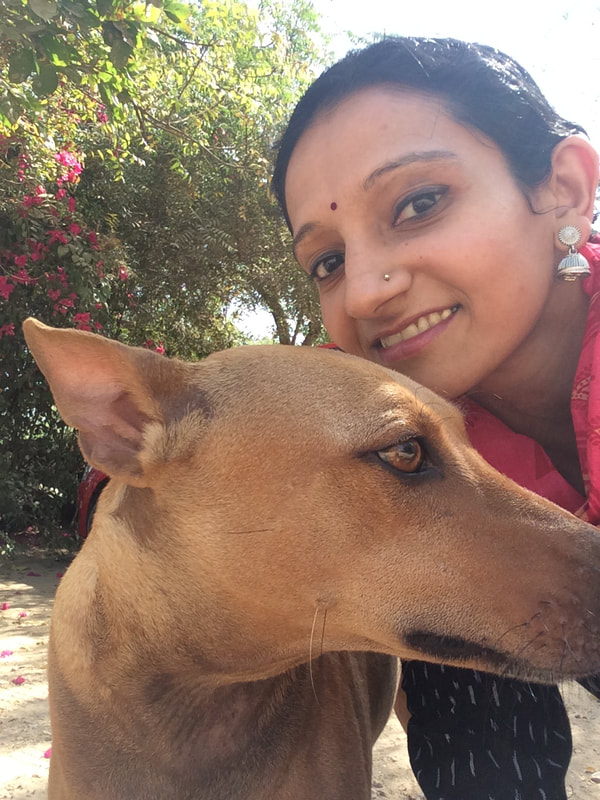|
My inspiration for creatures on the move  Sloka's hands showing a pigeon Sloka's hands showing a pigeon My inspiration for Creatures on the Move comes from helping my mother take care of the stray animals around our apartment, and later working at Animal Help Foundation, a spay-and-neuter shelter in Ahmedabad, where I was responsible for taking care of hundreds of animals every day. Another thing that attracts me to study animal movement is the sheer diversity in the pace, gait, and manner of movement that animals display. From the sinuous movement of the snake to a raptor soaring in the sky, to a squirrel that jumps around, the study of movement reminds me of Darwin’s take on the diversity he saw around him and noted in The Origin of Species [1,2]. There is grandeur in this view of life,
with its several powers, having been originally breathed into a few forms or into one; and that, whilst this planet has gone cycling on according to the fixed law of gravity, from so simple a beginning endless forms most beautiful and most wonderful have been, and are being, evolved. This sheer diversity in the lifeforms around us in terms of what they are, what they eat, and how they move is one of the things I love about teaching evolution at the American Museum of Natural History. After all, what could be more interesting than understanding and exploring the natural world? And how lucky am I to study and understand this beauty around us through science, and express it through dance? In this series, we will look at birds, insects, worms, and mammals, explore their movements, and how these movements can be used in Bharatanatyam. Hand gestures for some of these animals, e.g. pigeon and bee are routinely taught to students of Bharatanatyam. Gestures for fireflies, for example, are not routinely taught but exist in the Abhinaya Darpana [3], and. for animals like bats and squirrels, I developed the hastas through observation and experimentation. What I loved about this process was thinking of Bharatanatyam and the hand gestures we use to make up a living, breathing, evolving language. In a future episode of Vichaar, I hope to talk about language acquisition, how we learn and retain languages, and how dance is a language where movement comes to life.
1 Comment
Carol A Schachter
7/20/2022 01:33:55 pm
How much fun this is going to be! I'm watching creatures on the move with wonder. I've been around a long time, but it is awesome to see nature in a whole new light. By doing so, we fuse with natural things and become timeless.
Reply
Leave a Reply. |
About SlokaMy name is Sloka. I am a neuroscientist and Bharatanatyam dancer; you can find more about me here. Archives
June 2024
|


